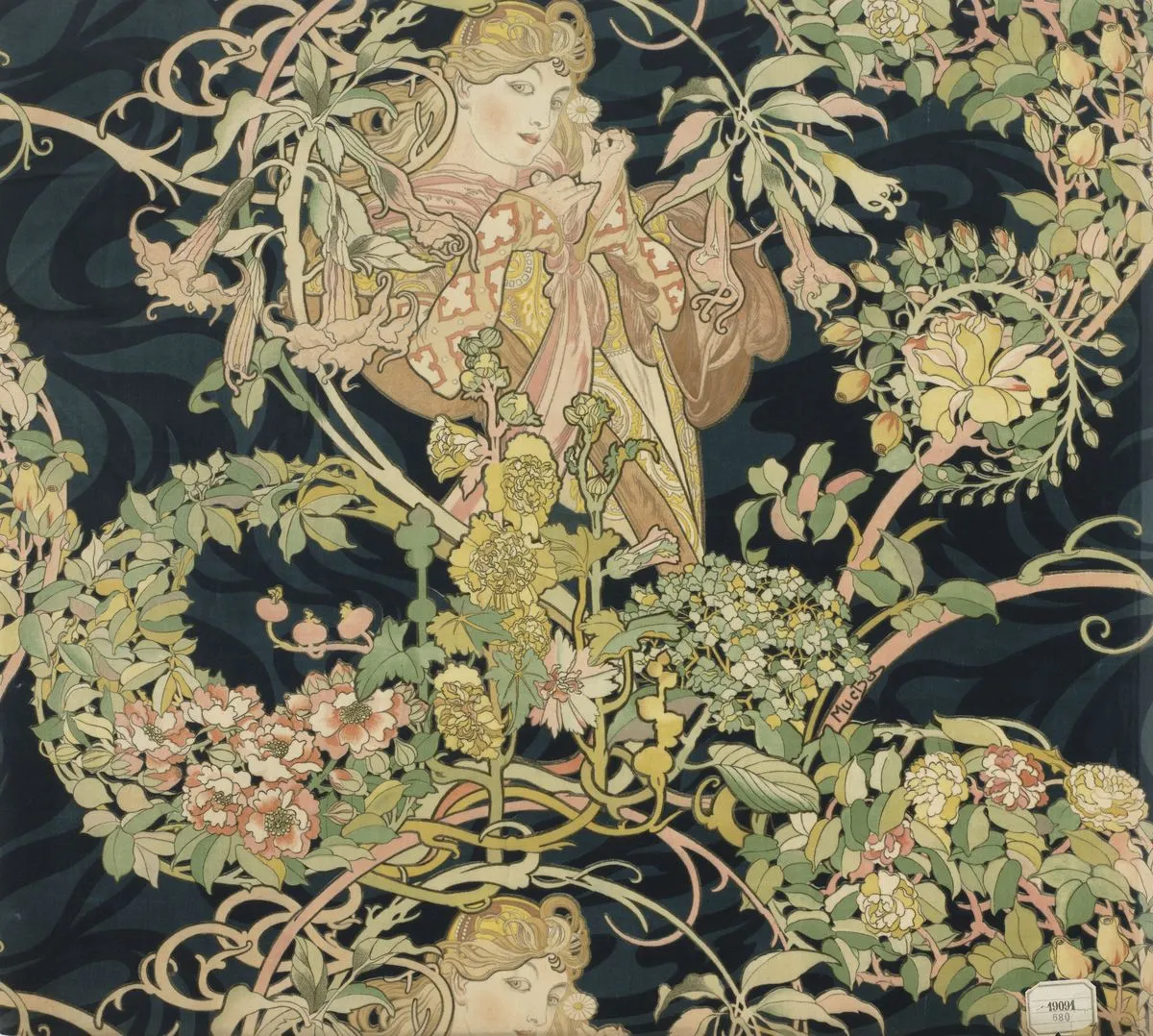 Alphonse Mucha, Lady with daisy (Femme à Marguerite), 1898-1900. Cotton velveteen, 27⅝”H x 30 5/16”W, 70.17 cm x 76.99 cm. Virginia Museum of Fine Arts, Richmond. Swenson Art Nouveau Fund, 2008.37. Photo: Katherine Wetzel © Virginia Museum of Fine Arts
Alphonse Mucha, Lady with daisy (Femme à Marguerite), 1898-1900. Cotton velveteen, 27⅝”H x 30 5/16”W, 70.17 cm x 76.99 cm. Virginia Museum of Fine Arts, Richmond. Swenson Art Nouveau Fund, 2008.37. Photo: Katherine Wetzel © Virginia Museum of Fine Arts In late February, I'll travel from my home in Durham, North Carolina, to the city of Roanoke, Virginia, to visit the Taubman Museum of Art. The purpose of my trip will be to view Taubman's exhibit Eternally New: The Art Nouveau World of Alphonse Mucha, which is up now through mid-March. Ahead of my visit, Cindy Petersen—the museum's director and the Mucha show's curator – was gracious enough to give me a virtual tour of the exhibit over Face Time. I was interested to view the show before being taken on the excursion over my iPhone screen; now I'm counting down the weeks and days before I can see the display in person.
The exhibit is a dazzling, stimulating, comprehensive set that not only captures the eternally influential artistic output of Mucha, but adds period pieces that set the visitor firmly in his time and place of Europe in the early part of the 1900s. There's much for the eyes to take in, but the exhibit doesn't stop there with its sensory offerings. There's also features that will activate guests' noses and ears. More on all of that below.
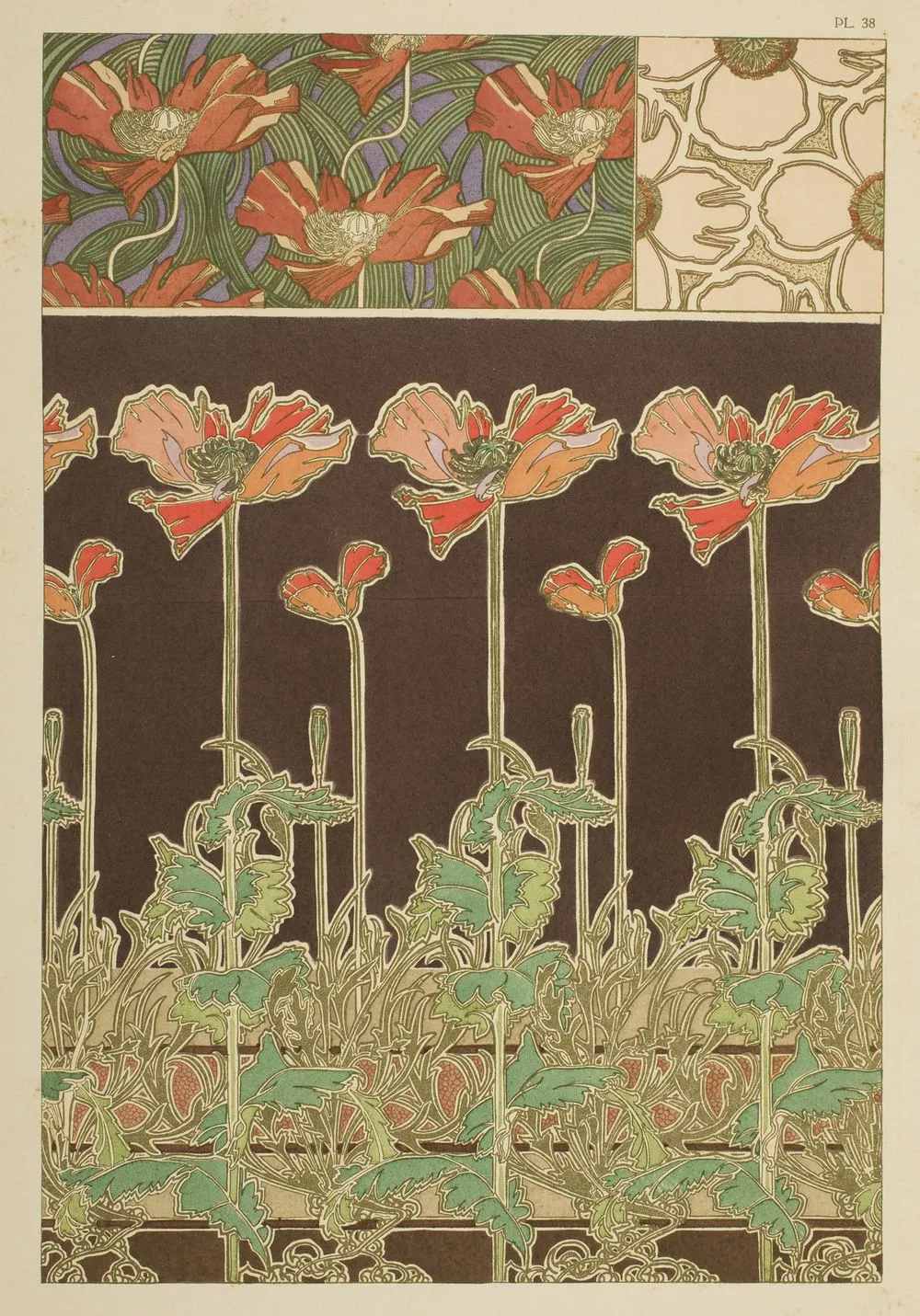
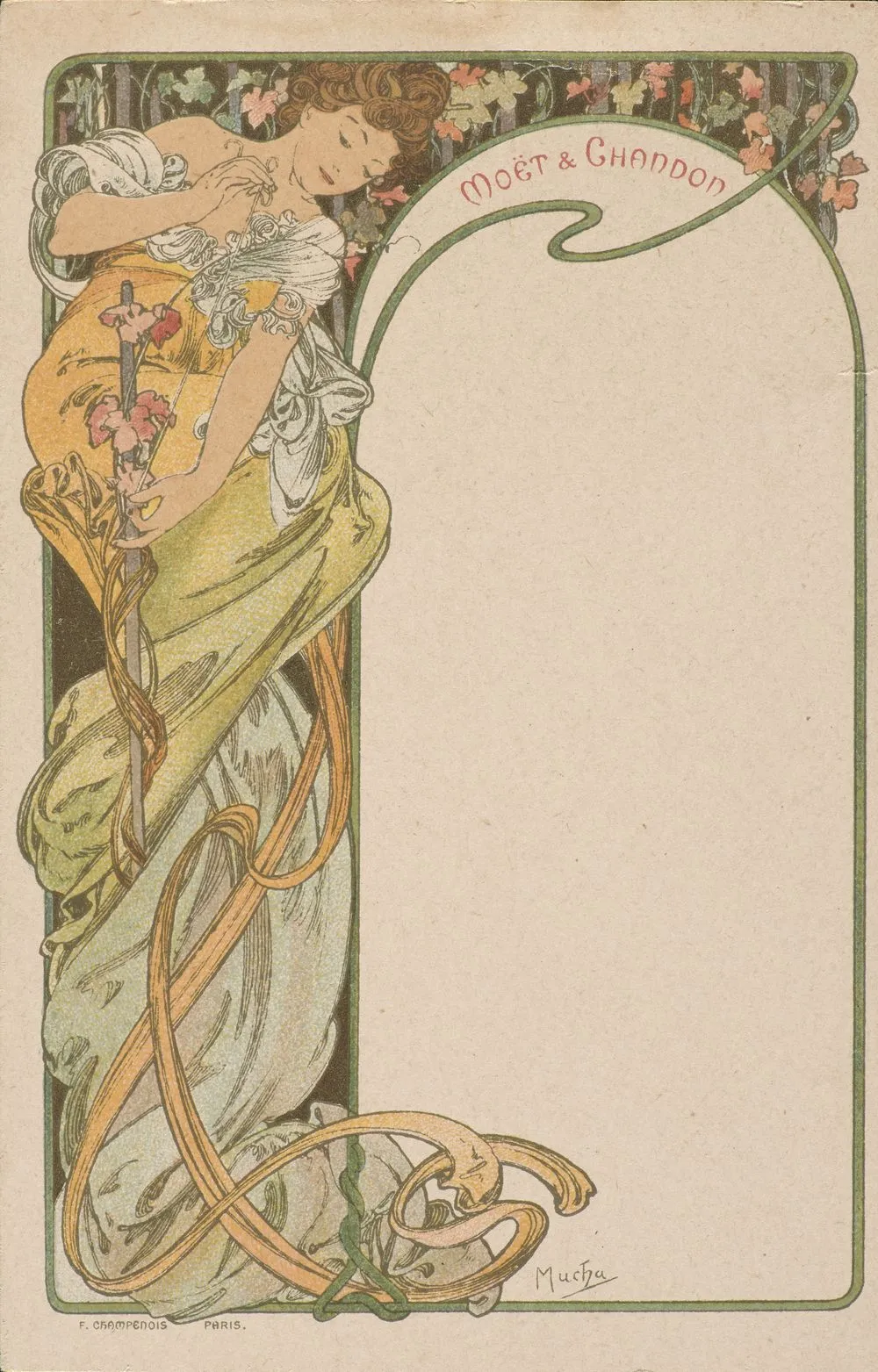
There's an immersive aspect to the show, which is on loan to the Taubman from the Grand Palais in Paris. Those lively pieces combine with around 50 of Mucha's works in painting, illustration, lithography, and sculpture—most of these on loan from the Virginia Museum of Fine Arts in Richmond—to make up the parts of the show that bring out his creative work in such a thorough and unique manner. As Petersen proudly explains, the Taubman is the first gallery outside of Europe to host the immersive series, as well as the first anywhere to combine those features with the foundational works included in the show.
The parts of the exhibit that are meant to take the viewer into Mucha's world include around 10 physical objects that represent the era, everything from a model of a 1925 car to examples of clothing and jewelry from the period. Petersen tells that she wants the show's guests to feel like they are inside Mucha's haunts in Paris and other parts of Europe as they take in the work he developed there. Before we enter the rooms that showcase his works, we are further prepared to appreciate his art by reading a set of storyboards that break down Mucha's creative timeline, from his earliest efforts in artistic expression to his big breakthrough in 1924 with the poster advertising Sarah Bernhardt's theatrical performance in the play Gismonda to his great final set of works, the Slav Epic painting series. Other pieces that effectively set the stage for seeing his output include a video of the artist’s great grandson discussing his famous relative's life and work, images of Mucha's journals, photographs, and studio space, and even a holographic projection of the leader of the Art Nouveau movement himself.
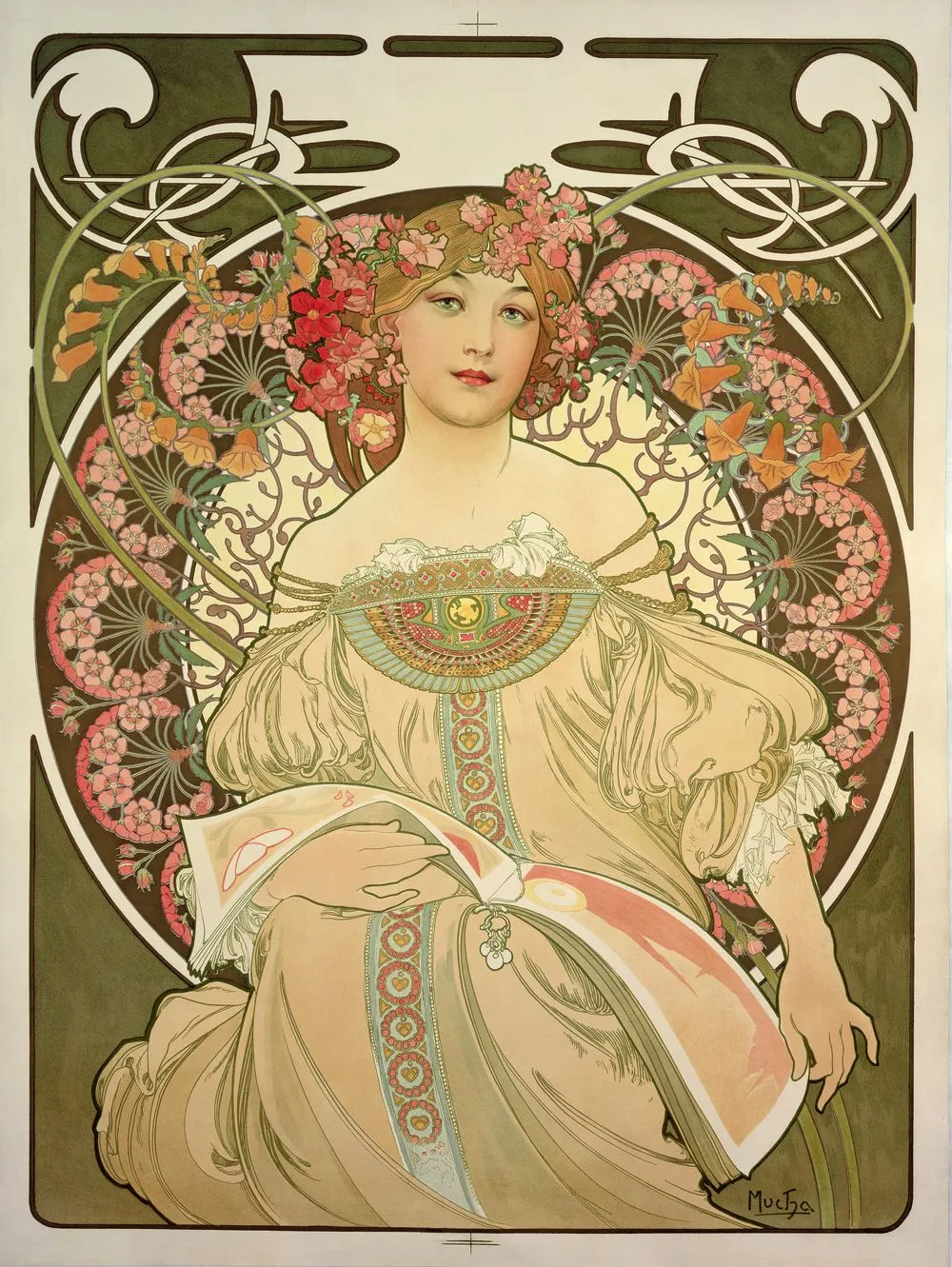
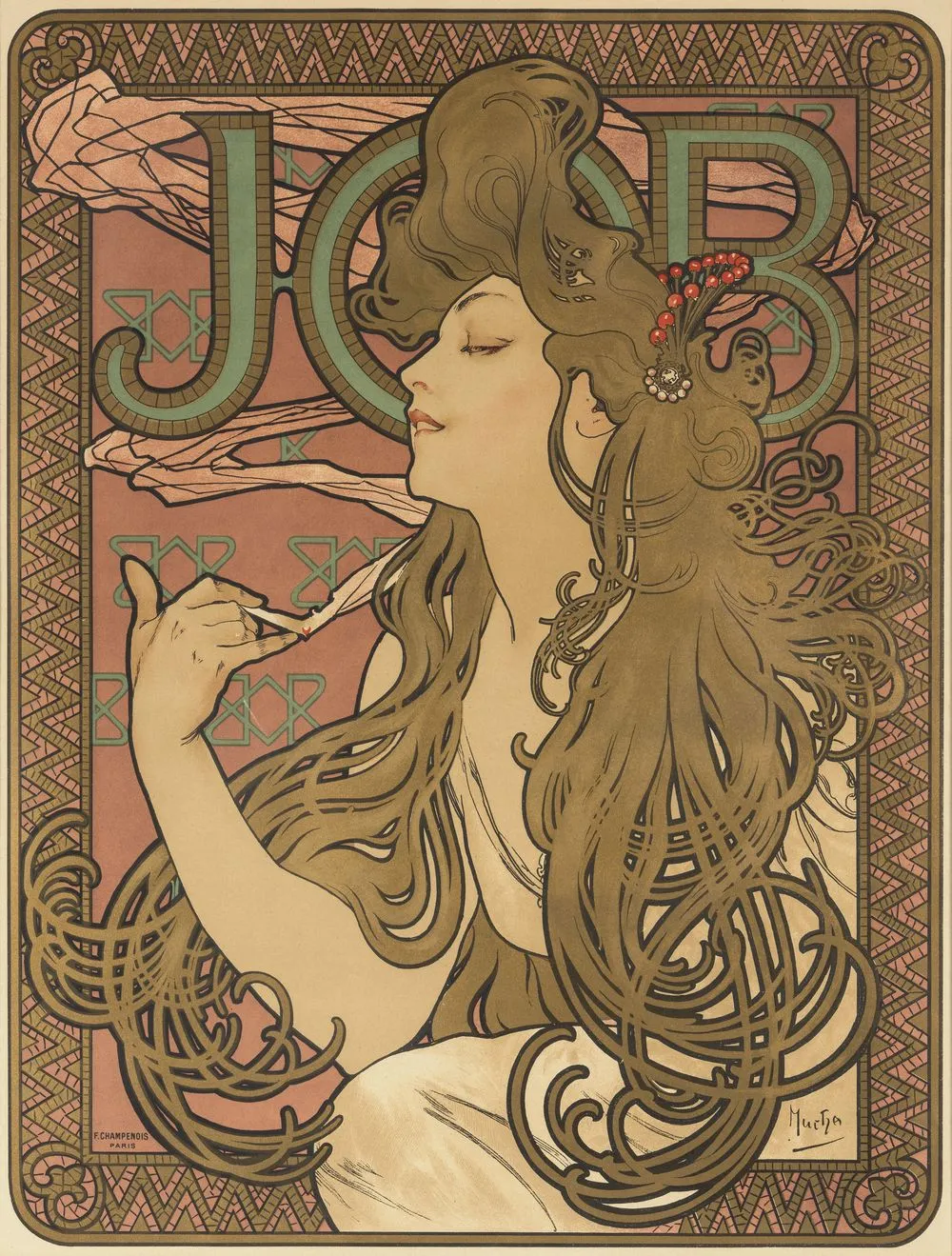
As we venture into rooms in the museum that contain Mucha's work, we are initially taken into his groundbreaking efforts in design and commercial advertisements. Mucha was, of course, a leading figure of an artistic movement that set out to break down the barriers between fine and commercial art. His gorgeous floral patterns that were intended to beautify people's homes, his innovate advertising illustrations promoting products like cigarette papers, bicycles, beer and other goods, etc., all made fine art readily available to the masses. And then naturally we are treated to examples of his most well-known illustrative works: the images of Bernhardt and other women with all their exaggeratedly abundant hair and flowing garments, the posters and other illustrations that pay such expressive tribute to womanhood in all its seductively alluring glory. As we travel deeper through the exhibit, we view the enormity of Mucha's late-period opus, the 20 egg tempera paintings he dubbed The Slav Epic, which he created to express his vision of the history of the Slavic peoples, encompassing all their suffering as well as their accomplishments.
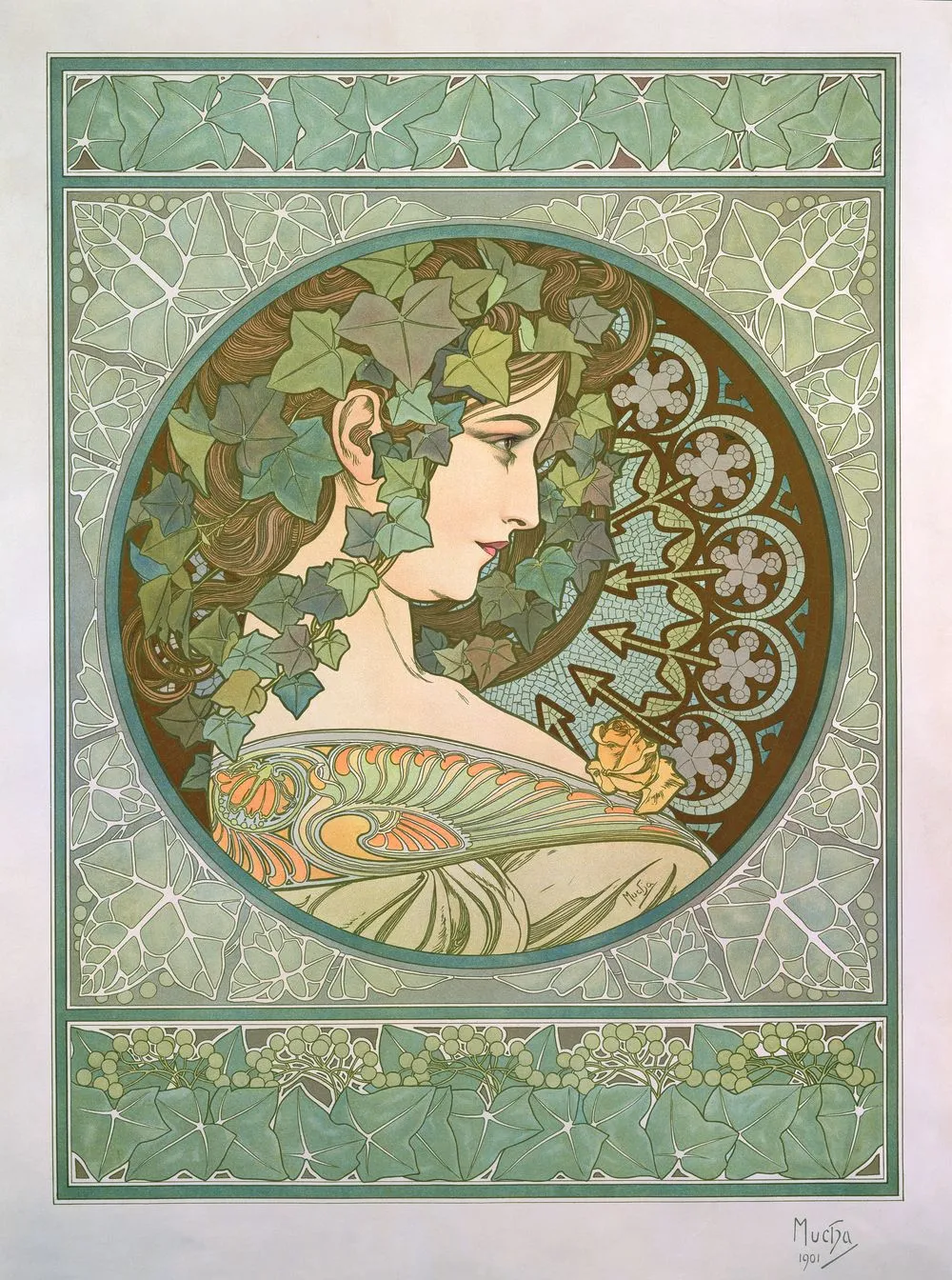
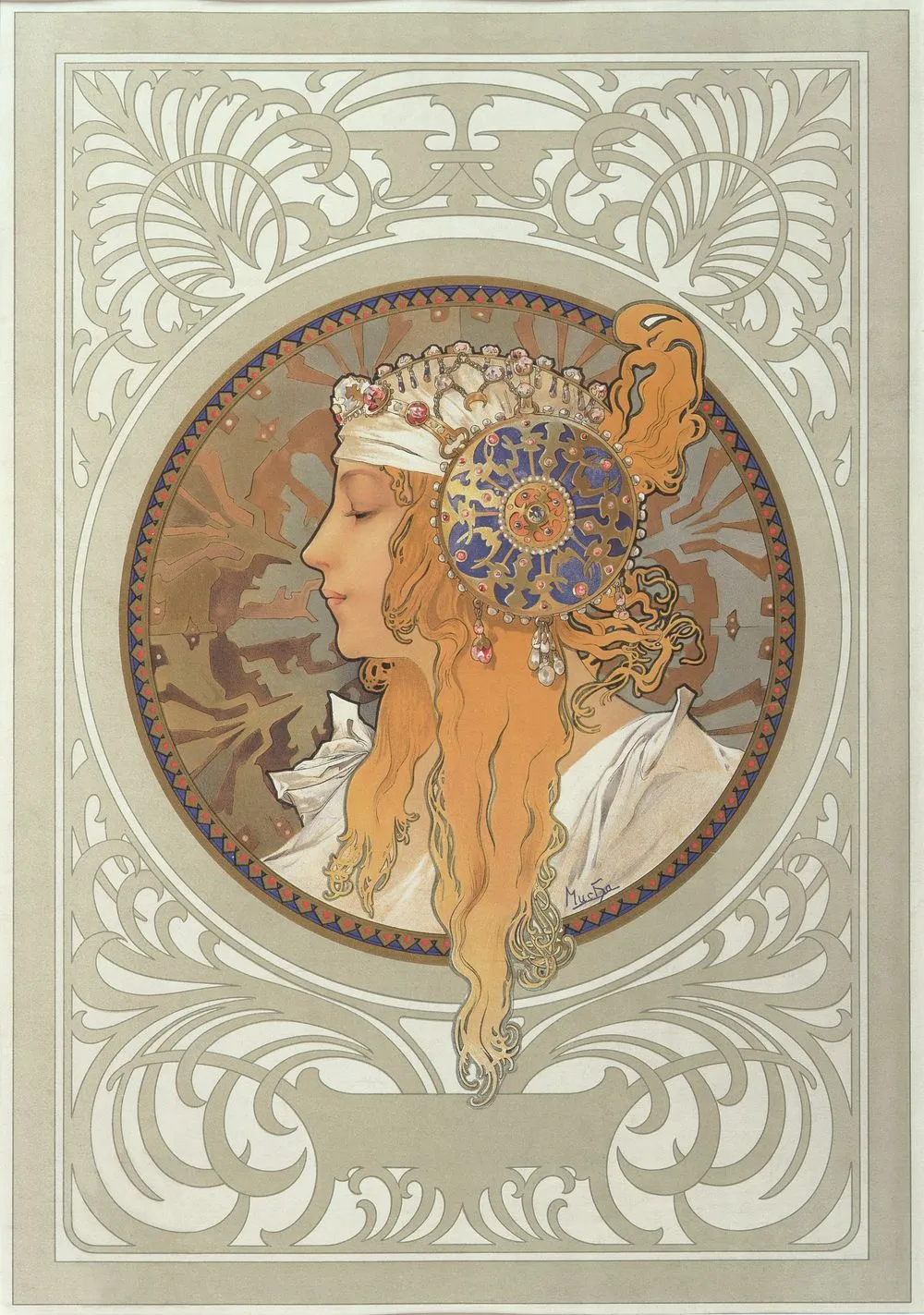
The 40 pieces of Mucha's life's work on loan from the VMFA—the largest collection of his art held outside Europe—are there at Taubman in a way that pays a panoramic tribute to all he accomplished in his expansive artistic career. The rooms that showcase his art also include those period pieces described above, as well as more of the selections from the immersive show curated by the Grand Palais, in conjunction with the Mucha Foundation. Petersen explains why she felt it was important to include the immersive features in Taubman’s exhibit:
"What attracted me to the Mucha immersive is that is so well-researched, historically correct, and inspiring. And interactive in every aspect. The curating is phenomenal in telling the story of Mucha through projection."
Queried as to how Taubman came to be the first host of the immersive Mucha show outside of Europe, Petersen’s face lights up with enthusiasm and pride.
“I presented at the Alliance of Associations of American Museums in May of 2023. A representative of the Grand Palais and Mucha Foundation saw me present on an immersive display we created here, in partnership with two universities. We had a conversation and then the Grand Palais later came to the U.S. to look at different sights that could host their Mucha immersive. They looked at art spaces in New York, Washington, D.C., Philadelphia, and Roanoke.”
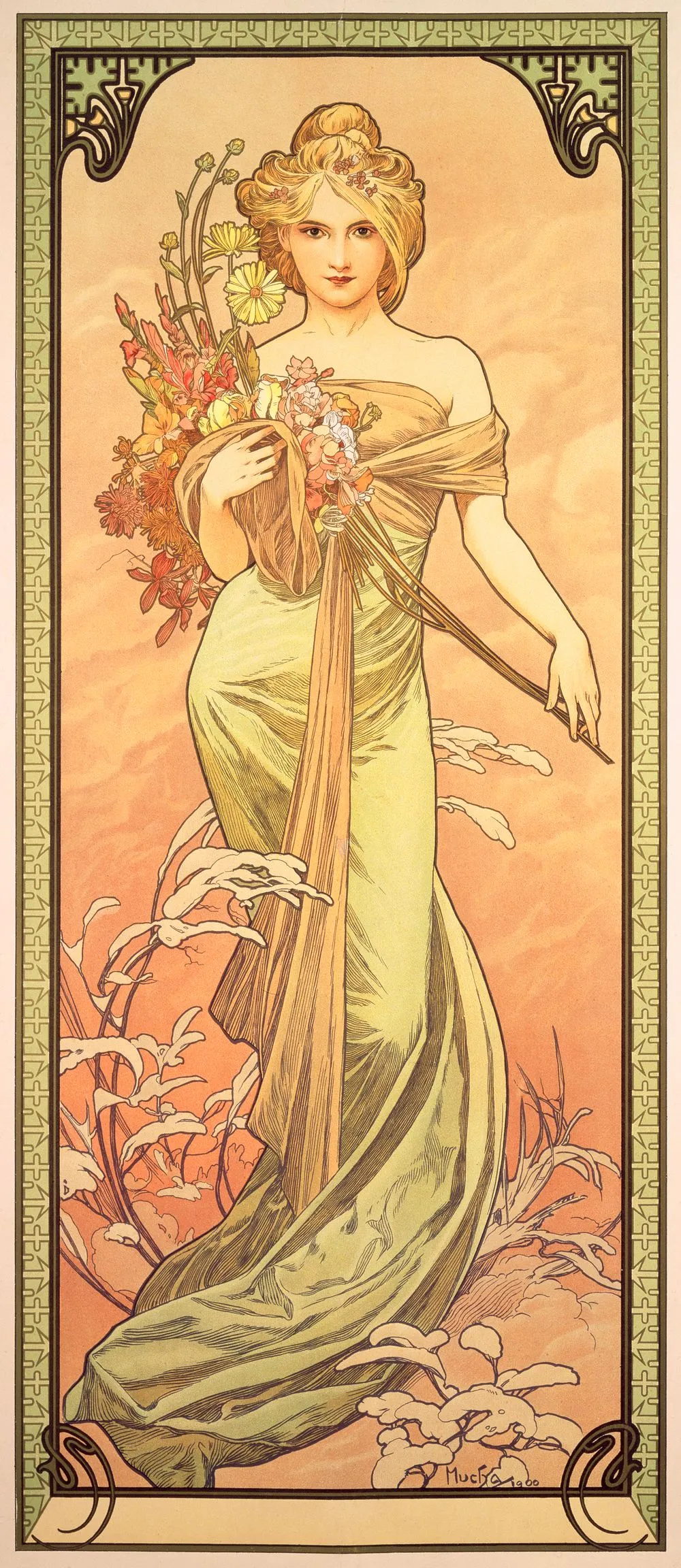
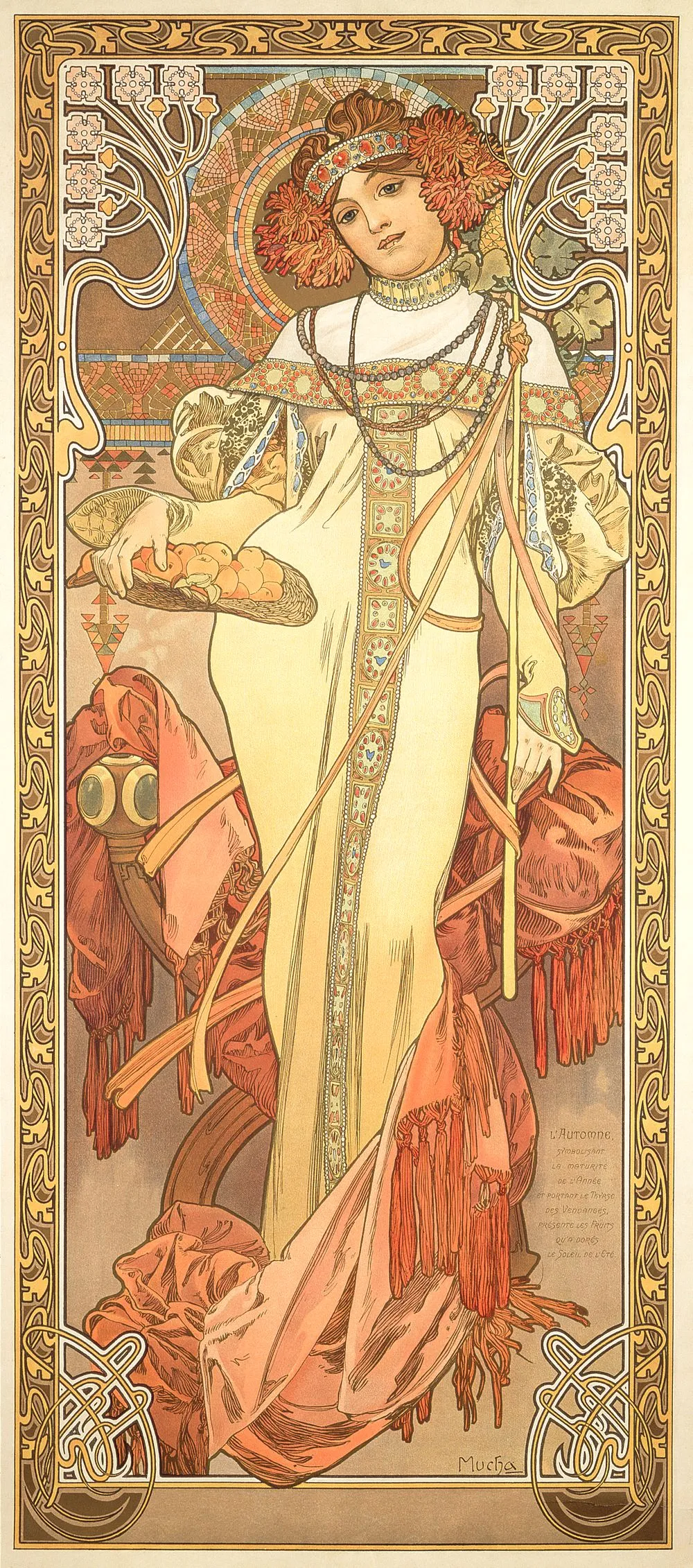
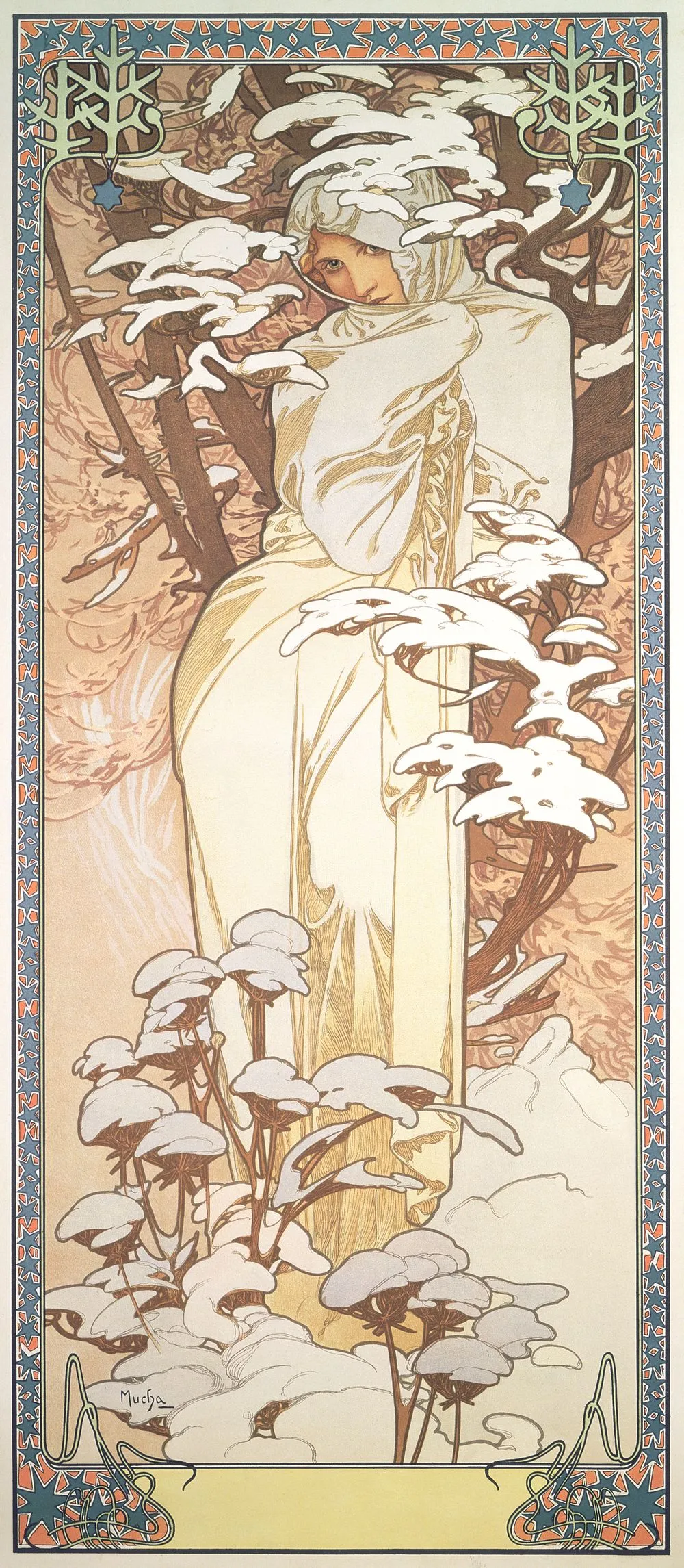
The Taubman was ultimately chosen as the American holder of the Mucha immersive. After a year of collaborative conversations between the museum and international partners involving strategic planning of how to best exhibit the immersive work at the Roanoke gallery, in conjunction with the static pieces from the VMFA, the exhibit opened in October of last year.
Eternally New is a show that encourages multiple viewings, because of its wealth of artifacts and sensory experiences to be taken in and unpacked. Petersen has encountered exhibit visitors who are both knowing Mucha enthusiasts fully informed about his art, as well as curious newbies who were previously uninitiated when it comes to his creative output. I asked her if she could compare and contrast the experience those two different sets of visitors tend to have in absorbing the show.
"I think everybody who has come has been able to learn something new. Because how often do you get to hear from the great grandson of Mucha? How often have you not only seen all the original works together but seen them along with the immersive components? I think that's the beauty of it, the hybrid. Because even if I already know a lot about Mucha, now I'm seeing his drawings come alive. I see him on the holographic projection, and I hear his voice speaking. That makes me want to go back and look at the work that I already knew, in a new way. I can also learn about the relevancy of the artists of today that are inspired by Mucha, whether they be street artists, manga comic artists, or people who drew concert posters for The Grateful Dead and other bands in the 1960s and '70s. And with those who aren't as familiar with his work, what I hear a lot is they've actually seen some of it, and recognize it, even if they didn't know who the artist was. I've also heard from many people who've come, whether they're new to Mucha or not, that the pieces illustrating the place and timeframe of Mucha's world help them appreciate the show."
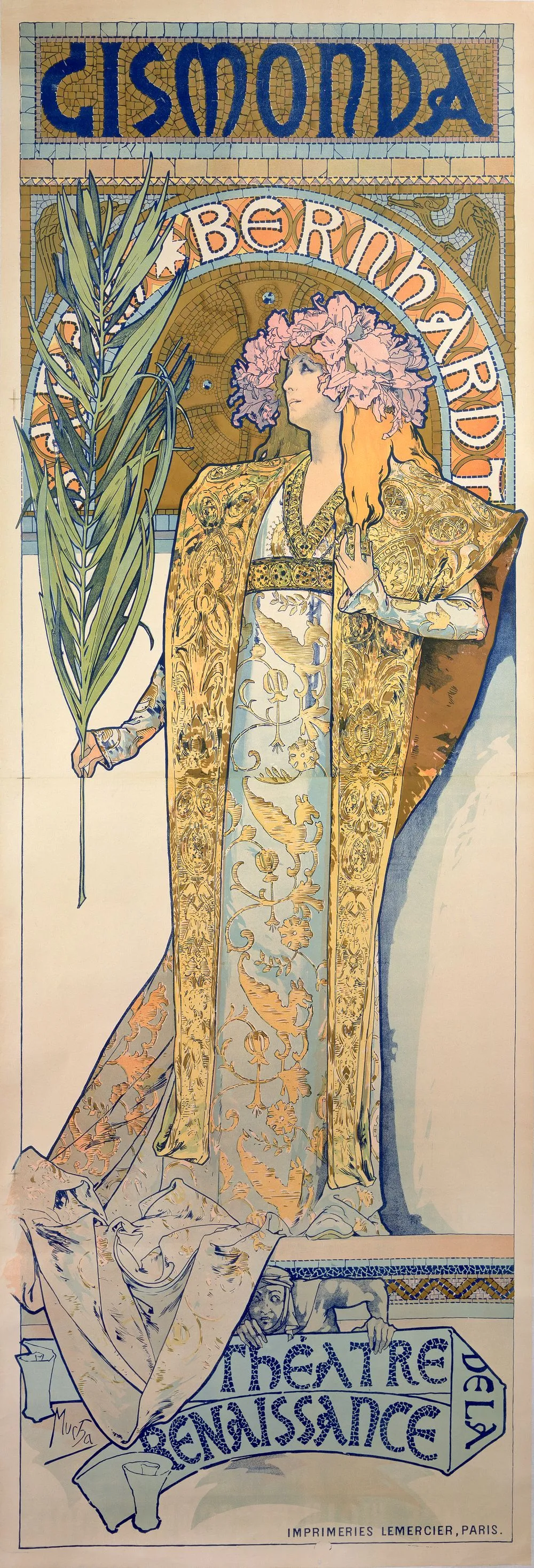
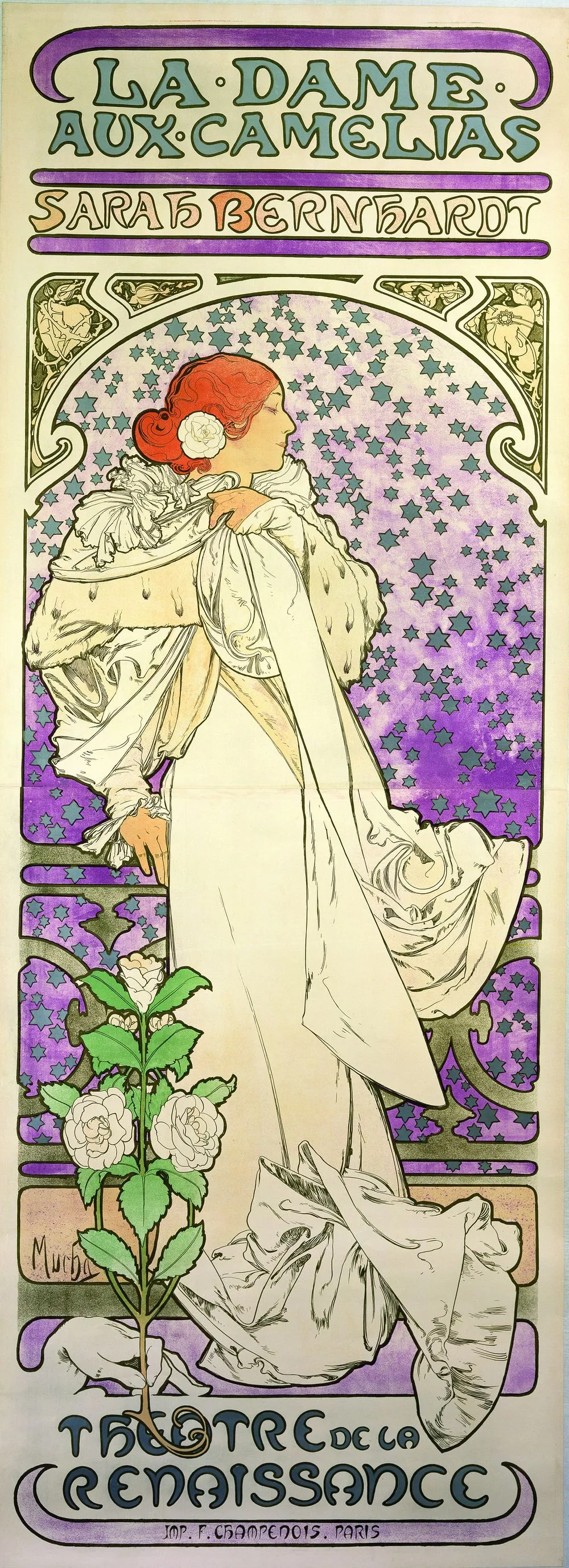
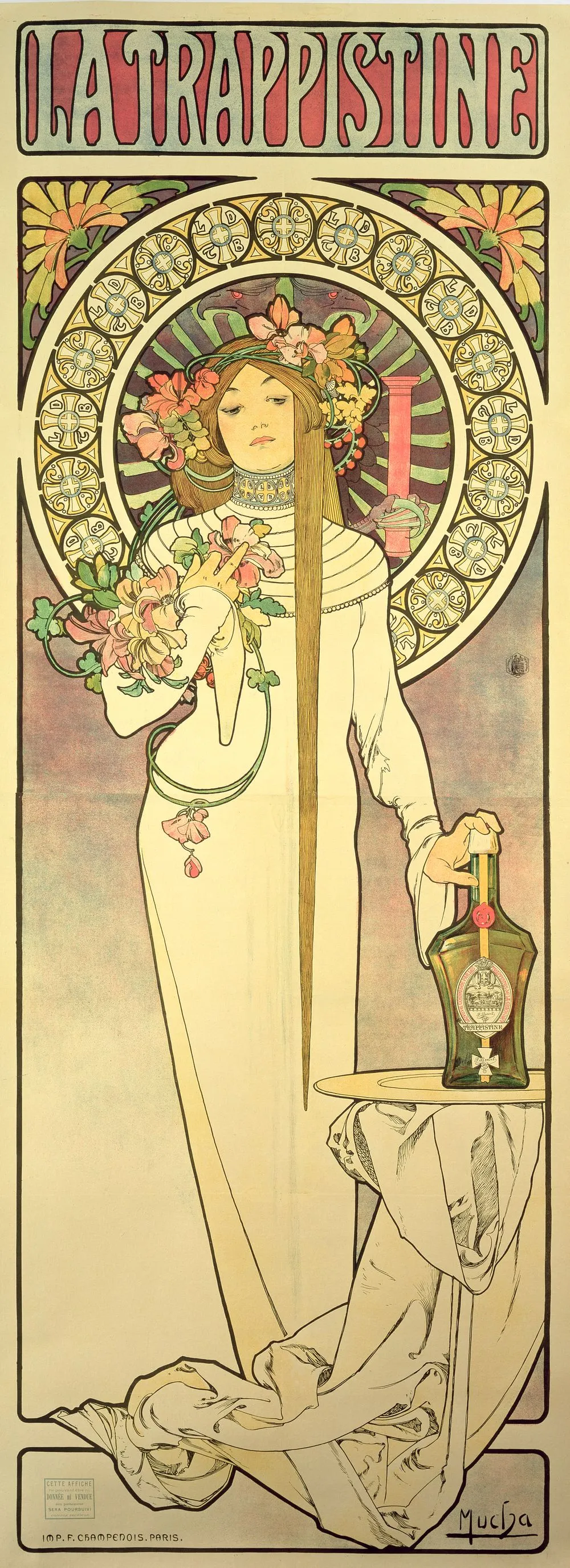
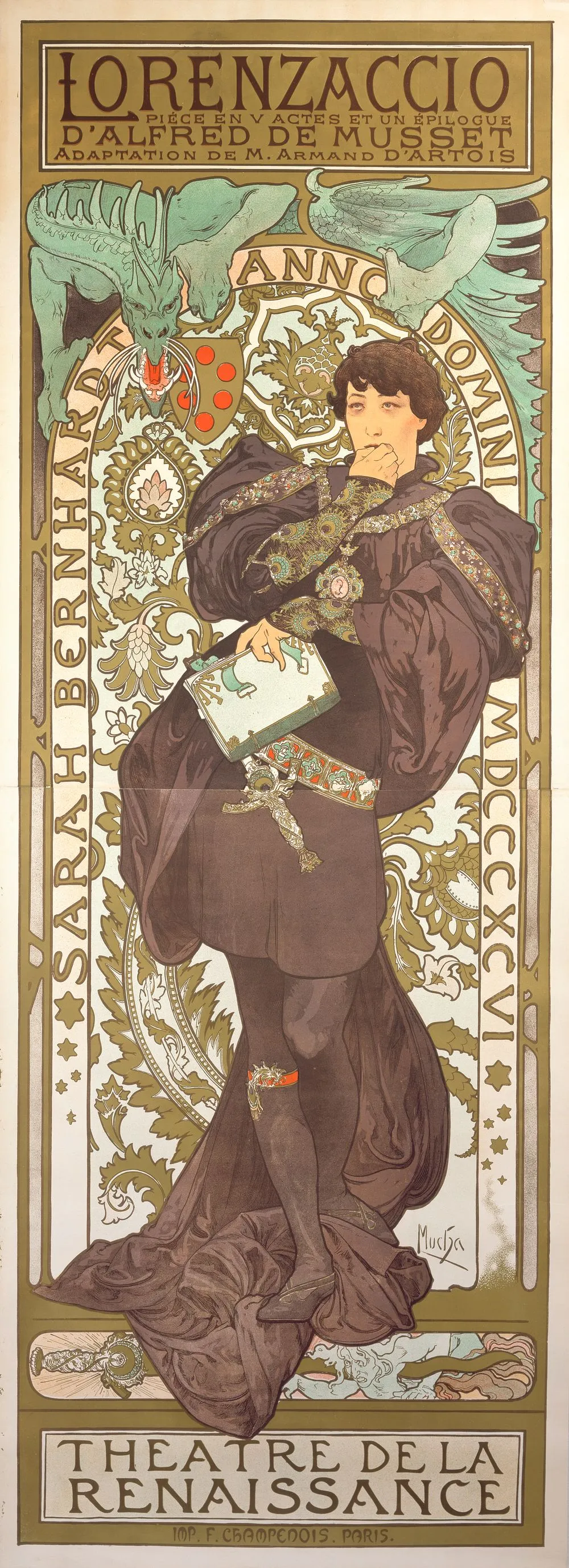
Eternally New also includes four scent stations that produce aromas that guests can let themselves be surrounded by as a way of entering Mucha's highly floral artistic universe. There are theater costumes that are of the kind Bernhardt would have worn on the stage in her place and time. Another immersive highlight is a series of four video interviews with modern-day artists who have been influenced by Mucha. Additionally, there are features like digitized versions of Mucha's illustrations that appeared in books and magazines, examples of commercial art created by some of Mucha's contemporaries, seven Mucha sculptures, and more. Near of the end of their tour, visitors can even use an interactive large screen to create their own Mucha poster and send it to themselves.
After we completed our virtual tour of the Mucha show, Petersen showed me around other areas of the museum, highlighting some of the signature pieces in its permanent collection while also demonstrating its architectural wonder. You might go there principally to witness the Mucha exhibit but, depending on where you're traveling from and how much time you have for your visit to Roanoke, you might want to consider adding a second day to your trip, because the other artworks on hand at the museum are worthy, as is the aesthetic experience of walking around the grounds.
The exhibition Eternally New: The Art Nouveau World of Alphonse Mucha will be on view at the Taubman Museum of Art in Roanoke until March 16th, 2025.